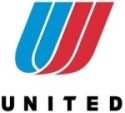Team Gathering Facts After UAL A320 Landed With Limited
Electric Power
 The NTSB continues to make progress in its investigation of
United Airlines flight 497, which returned to the airport on April
4, 2011, in New Orleans, shortly after take-off due to automated
warnings of smoke in the equipment bay. The airplane's nose wheel
exited the side of runway 19 upon completing the landing roll and
an emergency evacuation was conducted.
The NTSB continues to make progress in its investigation of
United Airlines flight 497, which returned to the airport on April
4, 2011, in New Orleans, shortly after take-off due to automated
warnings of smoke in the equipment bay. The airplane's nose wheel
exited the side of runway 19 upon completing the landing roll and
an emergency evacuation was conducted.
The NTSB team, comprised of 3 NTSB investigators and
representatives from the designated parties and advisors, arrived
on scene April 4 to document and examine the aircraft and retrieve
the data and voice recorders. Two other NTSB investigators,
specializing in operational factors and maintenance factors,
traveled to various locations to review pertinent documentation and
records and conduct interviews.
After documenting the condition of the equipment in the
electronics bay, investigators applied limited electrical power to
various systems on the airplane. At this time, the preliminary
examination has not revealed any signs of burning, indications of
smoke or other anomalous system findings.
The NTSB operations group completed interviews of the flight
crew Wednesday. The crew indicated that, at about 4000 feet, the
airplane's electronic centralized aircraft monitoring (ECAM) system
provided an autothrottle-related message, then an avionics smoke
warning message, accompanied by
instructions to land. Despite receiving this message, neither crew
member recalled smelling smoke or fumes during the flight.
The captain indicated that he used the electronic checklist for
the avionics system smoke warning indication, which included
shutting down some of the airplane's electrical system. The crew
reported that the first officer's display screens went blank, the
ECAM messages disappeared, the cockpit to cabin intercom stopped
functioning, and the air-driven emergency generator deployed. The
captain said that he took control of the airplane at this point and
managed the radios while the first officer opened the cockpit door
to advise the flight attendants of the emergency and their return
to New Orleans airport.
 The crew also noted to investigators that they requested
runway 10 for landing, but were told the runway was not available
due to the presence of construction vehicles. The captain said that
he was able to use the airspeed, altimeter, and attitude
information on his primary flight display during the return to the
airport, and that he ordered an evacuation after landing.
The crew also noted to investigators that they requested
runway 10 for landing, but were told the runway was not available
due to the presence of construction vehicles. The captain said that
he was able to use the airspeed, altimeter, and attitude
information on his primary flight display during the return to the
airport, and that he ordered an evacuation after landing.
As previously reported, the airplane's forward right slide did
not properly inflate during the emergency evacuation. After
examining the evacuation slides, investigators found that the
aspirator for the forward right-hand slide was partially blocked.
The aspirator component is the mechanism for inflating the slide
during an emergency evacuation. Investigators have retained the
slide for further evaluation.
Preliminary reports provided to investigators suggest that the
flight attendants did not smell or see smoke in the cabin, but
observed the cabin lights turn off and the intercom system cease to
function during the flight. Interviews of the cabin crew will be
conducted after the investigators complete their on-scene work to
more thoroughly document the cabin crew's observations and
communications throughout the flight and emergency evacuation.
The cockpit voice recorder (CVR) and flight data recorder (FDR)
arrived at NTSB headquarters in Washington, D.C. on April 5 and
were successfully downloaded. The CVR is of good quality and
captured approximately 7 minutes and 30 seconds of the incident
flight. The FDR contained in excess of 25 hours of data and
captured approximately 18 minutes of data relevant to the incident
flight. Both the CVR and FDR stopped recording data prior to
landing. Investigators will remain on scene to complete their
evaluation of the airplane and documentation of other factors in
the incident.
 Airbus Racer Helicopter Demonstrator First Flight Part of Clean Sky 2 Initiative
Airbus Racer Helicopter Demonstrator First Flight Part of Clean Sky 2 Initiative Diamond's Electric DA40 Finds Fans at Dübendorf
Diamond's Electric DA40 Finds Fans at Dübendorf ANN's Daily Aero-Term (04.23.24): Line Up And Wait (LUAW)
ANN's Daily Aero-Term (04.23.24): Line Up And Wait (LUAW) NTSB Final Report: Extra Flugzeugbau GMBH EA300/L
NTSB Final Report: Extra Flugzeugbau GMBH EA300/L Classic Aero-TV: 'Never Give Up' - Advice From Two of FedEx's Female Captains
Classic Aero-TV: 'Never Give Up' - Advice From Two of FedEx's Female Captains




